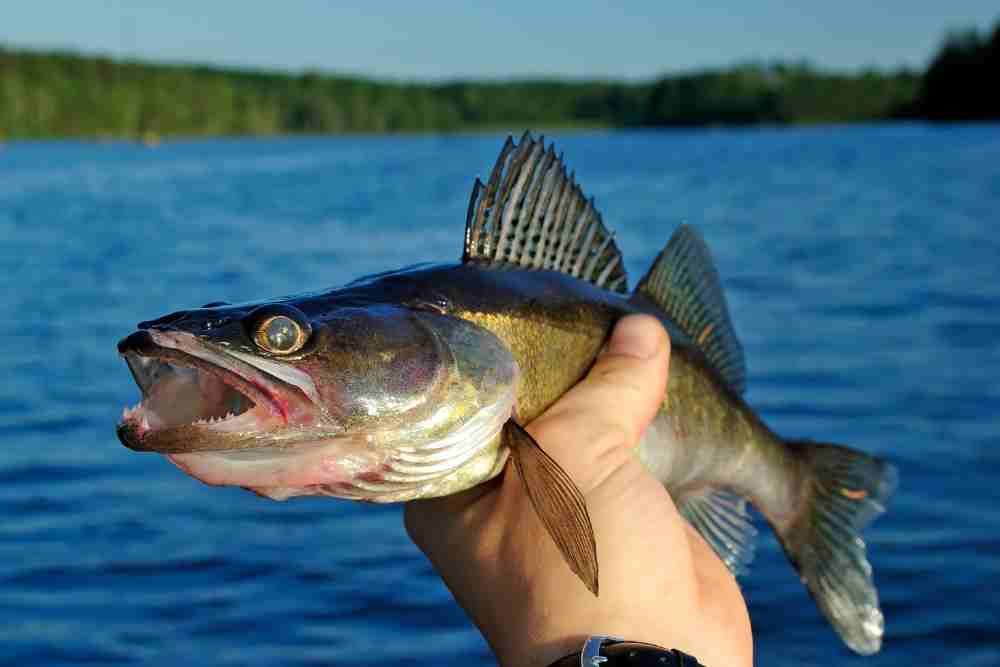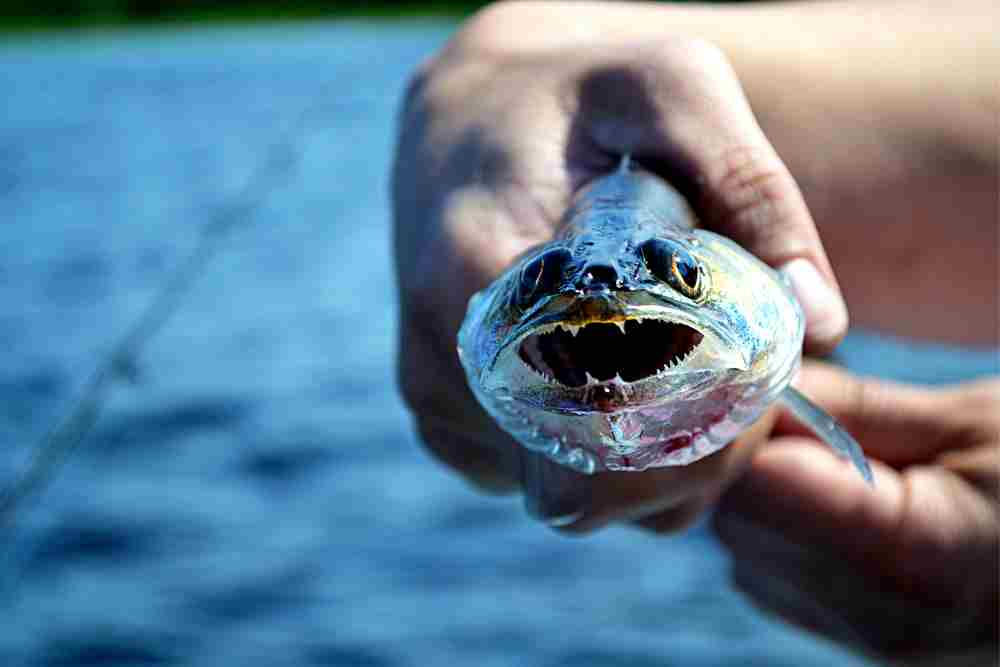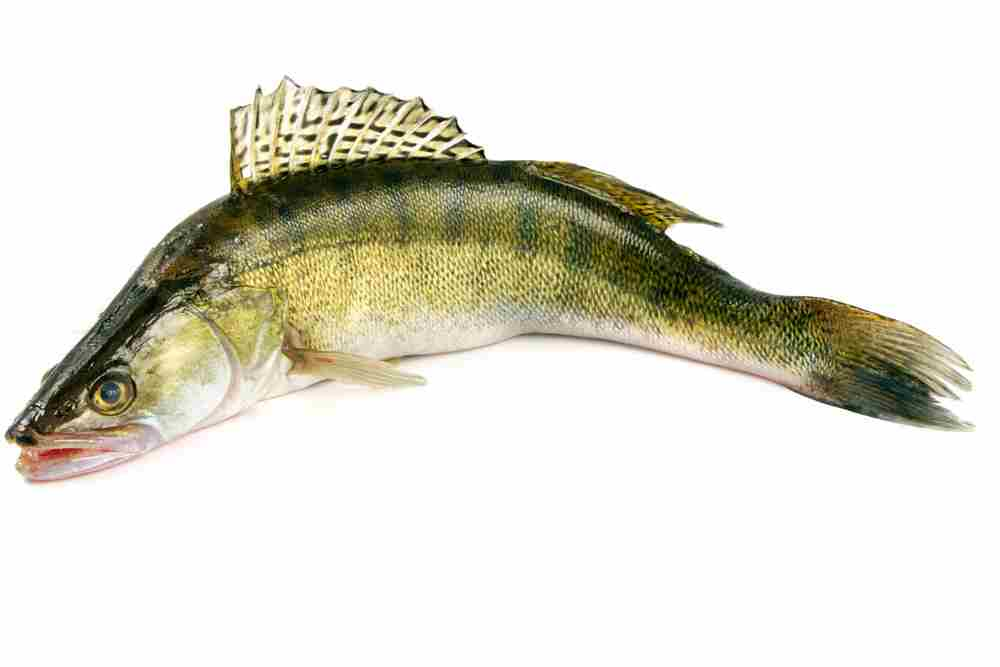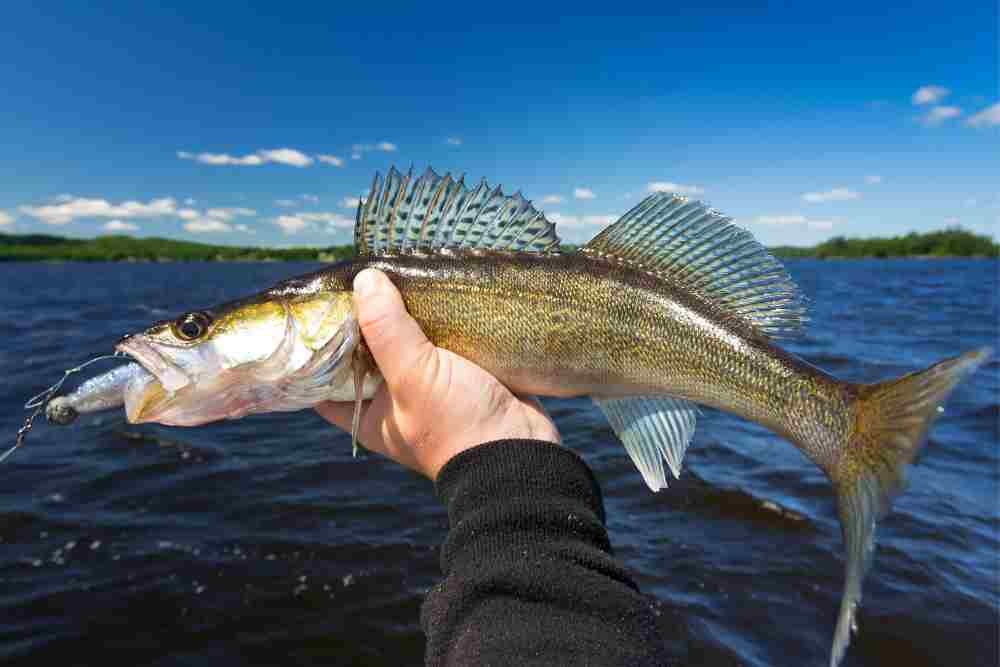Walleye is a freshwater fish species that is native to North America. They are a popular sportfish among anglers due to their large size, fighting ability, and delicious taste. Walleye have a distinctive pearlescent eye that appears to “glow” in low light conditions, which is where their name comes from.

10 Surprising Facts About Walleye Fish
1. Habitat & Feeding
Walleye is a freshwater fish native to Central North America and up into Canada.
They are commonly found in the Ohio and Allegheny rivers and the Great Lakes watersheds like Lake Erie in Pennsylvania.
They are carnivorous and feed on small fish, insects, and crustaceans. They spawn in the spring and lay their eggs on rocks or other structures in shallow water.
Walleye prefer colder water temperatures and are commonly found in lakes, rivers, and other bodies of water throughout the United States and Canada.
2. Pearlescent Eye with Unique Eyesight

Walleye have pearlescent eyes that help them hunt and see prey in dark or murky water. The fish featured in the video is called “walleye” (Sander vitreus). The walleye gets its name from its distinctive eyes, which are large and seem to glow.
The walleye has large, reflective eyes called the tapetum lucidum, which makes them effective visual predators, especially in low-light conditions. Their eyesight is crucial for hunting at night.
They have specialized eyes that are sensitive to low light conditions, allowing them to see better in murky water or at dawn and dusk. This makes them more active and easier to catch during these times.
3. Brown to Golden Yellow Body
The Walleye, scientifically known as Sander vitreus, boasts a distinctive body shape that sets it apart from other fish species. Its elongated and torpedo-shaped body is specially adapted for speed and agility in the water.
The fish flaunts a sleek and streamlined form, allowing it to move with remarkable precision and efficiency through various aquatic environments.
The color of walleye can vary from bluish gray to olive brown to golden yellow with dark on light mottling and sometimes regular spots on the sides.
They have a long roundish body, a forked tail, and sharp canine teeth. The back or dorsal side of the Walleye is a mottled olive-brown or gold, resembling the color of darkened water, which serves as excellent camouflage.
This coloring helps the fish to blend seamlessly into its surroundings, making it a cunning predator. The sides are adorned with patches of irregular dark markings, further aiding in its camouflage strategy.
Additionally, you’ll notice a fleshy, crescent-shaped lobe at the posterior end of the dorsal fin, which is one of the key characteristics used to identify the Walleye.

4. Long Living Fish
Walleye have a relatively long lifespan and can live for over 20 years in the wild. However, they grow slowly and may take several years to reach maturity.
Female walleyes are larger than males and can live up to 25 years, while males have an average lifespan of 15 to 20 years.
The world record walleye was caught in Old Hickory Lake, Tennessee, measuring 41 inches and weighing 25 pounds.
Walleyes have different growth rates depending on their sex and location, with southern walleyes growing faster than northern walleyes due to the warm water burnout effect.
5. Carnivorous
Walleye are carnivorous and feed primarily on small fish, such as minnows and perch, as well as insects and crustaceans.
Walleye are a key species in many freshwater ecosystems, as they play an important role in controlling the populations of smaller fish and invertebrates.
6. Coldwater Fish
Walleye are a coldwater fish and are found in lakes, rivers, and other bodies of water throughout North America. They prefer water temperatures between 60 and 70 degrees Fahrenheit.
Its natural range extends across various countries and areas of the continent, where it inhabits freshwater lakes, rivers, and reservoirs.
Some of the key countries and regions where Walleye can be found include:
United States: Walleye is widespread throughout the United States and is highly sought after by anglers in states such as Minnesota, Wisconsin, Michigan, North Dakota, South Dakota, Ohio, and Iowa, among others.
Canada: The species is abundant in Canadian waters, particularly in provinces like Ontario, Manitoba, Saskatchewan, Alberta, and Quebec, where anglers and fishing enthusiasts enjoy targeting them.
Mexico: In North America, Walleye populations can also be found in certain parts of Mexico, especially in the northern regions.
Great Lakes Region: The Great Lakes, shared by the United States and Canada, are known for their thriving Walleye populations, attracting anglers from both countries.
Scandinavia: In addition to North America, Walleye has been introduced to some waters in Sweden and Finland, where it is known as “sandart” or “gös.”
Eastern Europe: Walleye can also be found in certain lakes and rivers in countries like Poland, Hungary, Romania, and Bulgaria, usually as a result of stocking initiatives.
Russia: Some parts of northern Russia also host Walleye populations, particularly in areas close to the borders with Finland and Sweden.
7. Reproduction
Walleye spawn in the spring, typically when water temperatures reach around 40-50 degrees Fahrenheit. They lay their eggs on rocks or other structures in shallow water.
They spawn in shallow areas over gravel or rocky bottoms, and the females can produce up to 25,000 eggs per pound of their weight.
8. Nocturnal Behavior
Because of their unique eye structure, walleyes are more active at night. They can roam long distances, up to 50 miles, within a lake during the nighttime.
They tend to move closer to shore at night to take advantage of their superior night vision.
Walleyes are primarily sensitive to the colors red and green, but they struggle to see blues. Bright orange lures are more effective for catching walleye due to their color visibility.
9. Popular Sportfish

Walleye are a popular sportfish and are highly sought after by anglers due to their size and fighting ability.
Walleyes prefer cold water and are often found in deeper areas of lakes and rivers during warmer months.
Walleyes primarily feed at dusk and during the cooler months, but in summer, they are more active at night.
Fishing tips include trolling stick baits in shallow water during spring and using vertical jigging or bottom bouncing with worm harnesses in deeper waters during summer.
Ice fishing for walleye can be successful by using vertical jigging spoons or tip-ups with live bait like minnows or crawlers over structure points.
10. Culinary Delicacy

Walleye is known for its delicious taste, and it is highly regarded as a good eating fish. Walleye have a mild, flaky flavor and a firm texture that is similar to other white fish.
They are often used in cooking, particularly in the Great Lakes region and throughout Canada.
Walleye are prized for their flavor and nutritional value, as they are a good source of protein, omega-3 fatty acids, and other important nutrients. They are also relatively low in mercury compared to other fish species.
In conclusion, the Walleye’s body shape, with its elongated design, camouflage coloration, and specialized eyes, epitomizes the remarkable ways nature has sculpted this species for survival in the underwater realm.
Whether you’re an angler marveling at its beauty or a curious observer of nature’s wonders, the Walleye’s unique physique never fails to captivate and leave us in awe.
2 thoughts on “10 Surprising Facts About Walleye Fish”
Comments are closed.